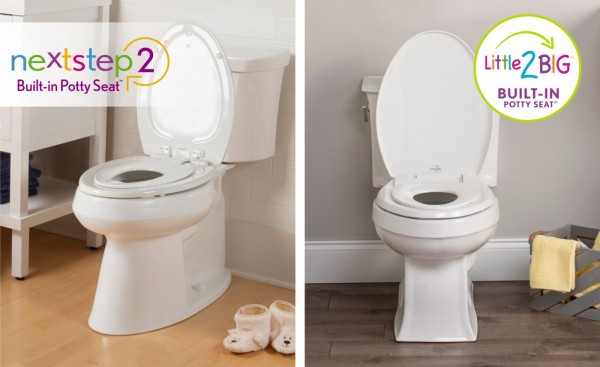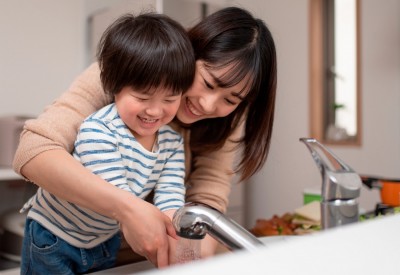Teach Good Potty Training Hygiene from the Start
Once you’ve established that your child is ready for potty training, you can begin to teach potty training words to help them communicate better. A schedule helps your toddler with the process, but perhaps the most important one is learning and practicing good bathroom hygiene.
Set a Good Example for Potty Training
 Children are natural mimics! Your toddler loves to watch Dad do something, then try it himself. So continue setting a good example in the bathroom. Your child looks to you for instruction and approval, and as he observes you, it will become easier for you to encourage him to follow along.
Children are natural mimics! Your toddler loves to watch Dad do something, then try it himself. So continue setting a good example in the bathroom. Your child looks to you for instruction and approval, and as he observes you, it will become easier for you to encourage him to follow along.
Let’s start with hygiene at the toilet. If you have a stand-alone potty chair, you know the smell and mess of emptying it. Spills happen, no matter how careful you are, and the experience of cleaning and sanitizing is unappealing.
There’s a better way! Meet our Little2Big™ and our NextStep2®, both built-in potty seats. They’re sized to fit the whole family and let you skip the hassle of emptying a stand-alone potty chair, making the process so much easier!
Little2Big™ is an all-plastic model with a child-sized ring that lifts and secures into the cover. NextStep2® features an enameled wood ring and cover, with a plastic child-sized ring that lifts and secures magnetically to the cover. You can breathe a sigh of relief, knowing you’ll never need to empty a potty chair again!
Proper toilet hygiene also involves teaching your child how to wipe, using fresh squares of toilet paper until no residue remains. Children should wipe from front to back – wiping in the opposite direction can spread bacteria, cause irritation, and possibly lead to infections. After going potty, show your child how to pat herself dry instead of rubbing, which can chafe sensitive skin.
After your child is finished, show her how to close the lid and flush. This keeps microdroplets in the bowl instead of being expelled in the air. Your child is naturally curious and may want to watch everything swirl down the bowl, but after a few times, her interest will diminish, making it easier to teach the habit of closing the lid before flushing.
Make Handwashing a Priority
Then it’s time for handwashing! This step is an important way to stop the spread of germs and encourages good hygiene. Consider using a sturdy step stool to make it easier for your child to reach the faucet handle and soap dispenser. Show your child how to clean thoroughly using soap and water for at least 20 seconds. Singing the familiar “Happy Birthday” song is an easy way to mark this time and make the process fun.
Another tip? Keep a hand towel clipped to a ring on the vanity, within easy reach. This not only secures the towel in place but also teaches another good hygiene tip: towels on the floor will pick up dirt!
After your child has thoroughly dried his hands, congratulate him on a job well done. If you use rewards, now is a good opportunity to have your child put a star on his chart or let her choose from a selection of appropriate incentives. If not, a pat on the back and encouraging words are always appropriate.
Learn more about the differences between Little2Big™ and NextStep2®, and the great advantages of both. And if you’d like to learn more about the potty training process, our potty training articles have helpful tips and suggestions.